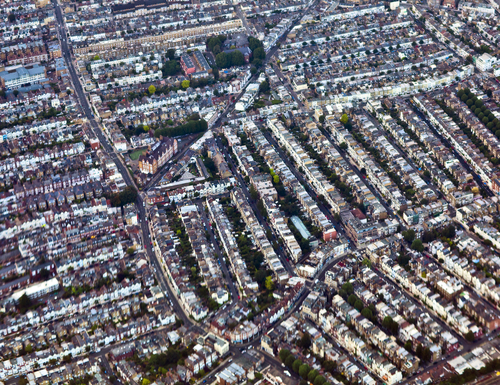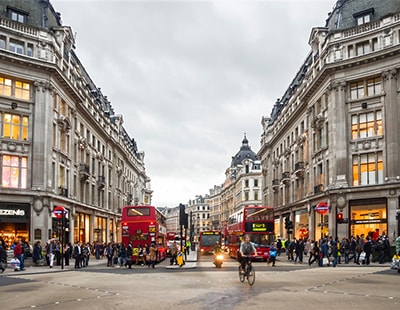Four years after the first Covid restrictions, new research by Centre for Cities shows Londoners’ escape to the country during the pandemic was modest and short-lived.
London’s population fell by 75,500 people between mid-2019 and mid-2021 – a decline of 0.7 per cent or the equivalent of the population of a town the size of Tunbridge Wells – but with the addition of 66,000 people the following year the capital is becoming a magnet for people again.
In its new briefing - Escape to the Country? How Covid changed London’s population - Centre for Cities finds that there was an increase in the number of people who quit the capital during the pandemic but this increase was relatively modest and an amplification of well-established trends:
- 191,000 more people left London than moved to it in 2020-21, up from an average of 103,000 in the five years before the pandemic;
- of the leavers, those aged between 30 and 45 were most likely to leave, as was the case before the pandemic. The difference is that people were more likely to be childless than before 2020;
- and those who left continued to move to places a commute away from London or elsewhere in the Greater South East – 58 per cent of people moved to the South East or East regions of England, the same proportion as before the pandemic hit.
In a ‘race for space’ during Covid, people were more likely to move to a rural location in the Greater South East than was the case previously, but this trend too appeared to have fallen back from its 2020-21 peak in 2021-22 figures.
And for some inner London boroughs, such as Camden and Tower Hamlets, population inflows have since exceeded their pre-pandemic average. Rising rents suggest that the demand to live in the capital has continued to increase.
Data is not yet available up to 2023 but, combined with the recovery in migration from abroad, London’s population had almost returned to its pre-pandemic peak by mid-2022 and is now likely to be well above it.
Andrew Carter, Chief Executive of Centre for Cities, says: “While there was a ‘race for space’ during the pandemic, this data shows it to have been short lived. The population dip during Covid was considerably smaller than the figures in the hundreds of thousands that some predicted.
“The big challenges associated with London remain. London’s infrastructure is creaking under the weight of its population.
“Policymakers have to shake off any assumption that population changes mean questions over the housing shortage and infrastructure will solve themselves. Nor will smaller, less affluent places see huge influxes of professional workers with greater spending power.
“There are big decisions to make like continuing to invest in the public transport network, for example the Bakerloo Line extension and Crossrail 2, so that people can get around. Delays to big infrastructure projects and housing delivery will constrain London’s potential.”
Want to comment on this story? Our focus is on providing a platform for you to share your insights and views and we welcome contributions.
If any post is considered to victimise, harass, degrade or intimidate an individual or group of individuals, then the post may be deleted and the individual immediately banned from posting in future.
Please help us by reporting comments you consider to be unduly offensive so we can review and take action if necessary. Thank you.






.png)









.jpg)






%20(002).png)



.jpg)
.jpg)






Join the conversation
Jump to latest comment and add your reply
With a Labour mayor and a Labour government imminent I don’t think so!
They are like 🐀 in a 🪤 trap 😬 A day visit…yes. Even a weekend stay for the sights… yes, but to live there 😩🫣👎🏻😬 good god no.
Sad IQ Khan wants rent controls. Sir Kneel, if he forms a majority government which is not guaranteed, will give them to him. Ripe for retal investment? Not if you have a brain.
Has anyone done a study of where on earth the 750,000 net immigrants per year are finding places to live? They must be having an impact on rental demand and occupation density but I've never seen any reporting of where the pressure points are and what proportion is attributable to increased demand from immigrants.
I should add I'm not focusing on immigrants because I've got some anti-immigrant agenda. I'm just genuinely curious where on earth these hundreds of thousands of people per year are finding accommodation, as all the trends appear to be towards less availability in the PRS.
Please login to comment